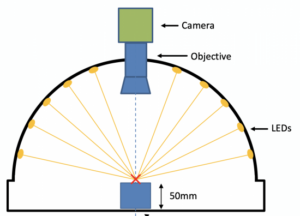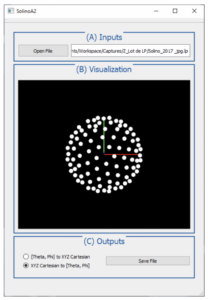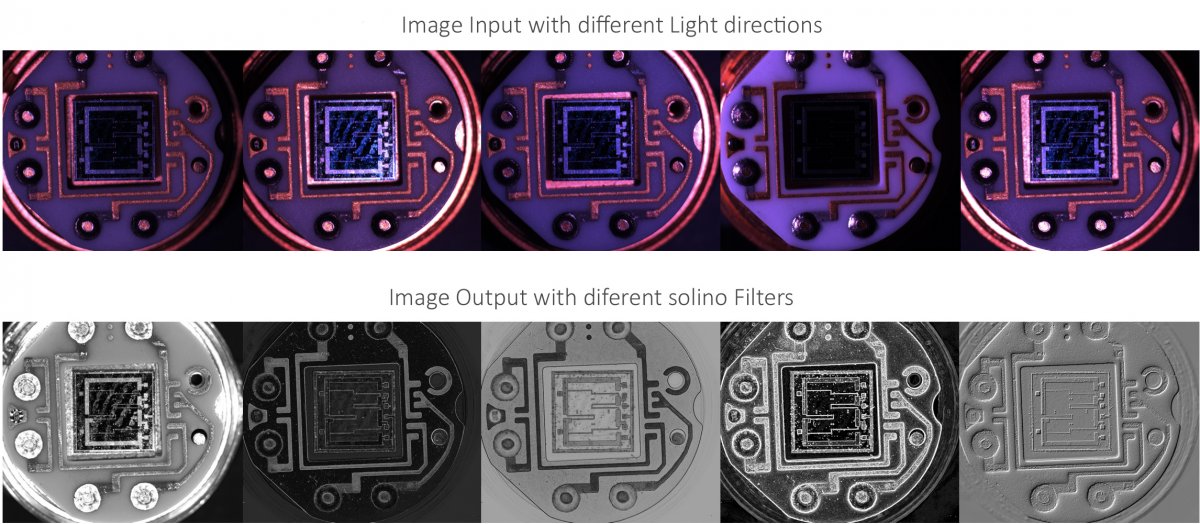Solino image acquisition capture via multi-LED dome lighting
The solino image acquisition is based on the correlation of a directed light source to the camera module. The primary goal is to be able to detect the minimum scattering pulse on a wide variety of objects. This is the only way always to detect all defects on all objects. However, this requires a very close-meshed arrangement of LEDs – implemented in the Solino 10×12 using 64 white light LEDs in a dome arrangement.
Solino® processes the image information of each lighting scenario and combines it with information about:
- the type of source
- the position and collimation
- the distance and colour
- the stray light component
- the better we can feed the solino® algorithm, the better the anomaly detection is getting

Photometric Stereo Image Acquisition
‘Photometric stereo’ describes capturing images taken from different illumination angles.
 Solino® does not differ here in the image capture, but it does differ significantly in the image processing. Instead of working with the individual image information, the scattering value per object point is calculated two-dimensionally and thus already evaluated internally during acquisition and recognized as an anomaly.
Solino® does not differ here in the image capture, but it does differ significantly in the image processing. Instead of working with the individual image information, the scattering value per object point is calculated two-dimensionally and thus already evaluated internally during acquisition and recognized as an anomaly.
Although the images from Solino® often look the same, the image information they contain:
- Created by evaluating scattering information on the surface and not by images alone
- Repeatable and comprehensive, as the 64LED mesh dome illumination detects and stores all possible defects on all possible surfaces
- Object-specific adaptable, whereby anomalies (defects, scratches, etc.) can be specifically displayed
- Perfectly suited for classifications and can act as a data source with Deep Learning packages
Solino® correlates the light positions
 Based on calibrated illumination angles and intensity profiles, the Solino® algorithm detects all surface anomalies.
Based on calibrated illumination angles and intensity profiles, the Solino® algorithm detects all surface anomalies.
The decisive factor here is not the light source’s type, intensity or homogeneity. The most important part is the assignment of the image capture to the light identity. To be able to achieve optimal results, special tools for system calibration have been developed accordingly.


